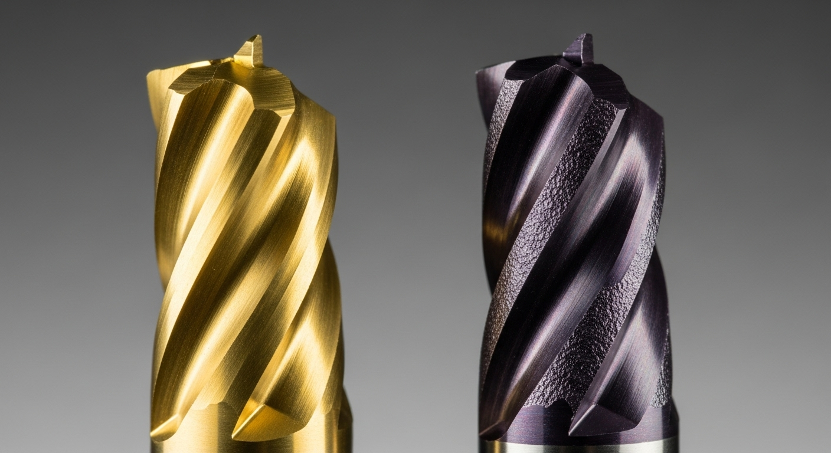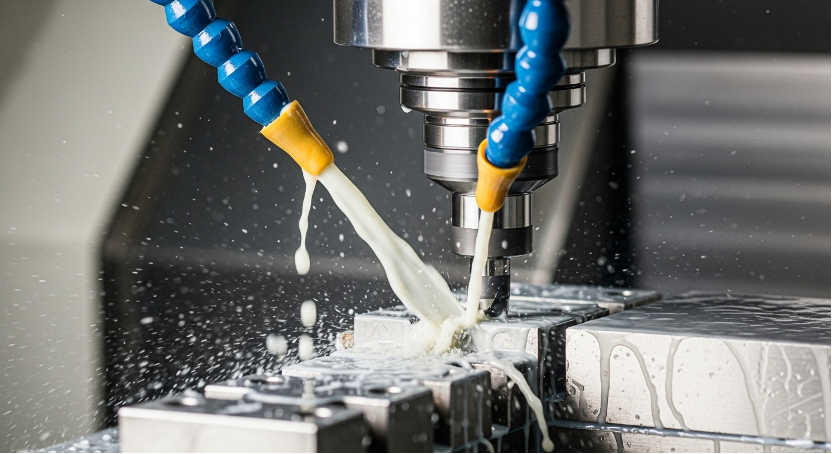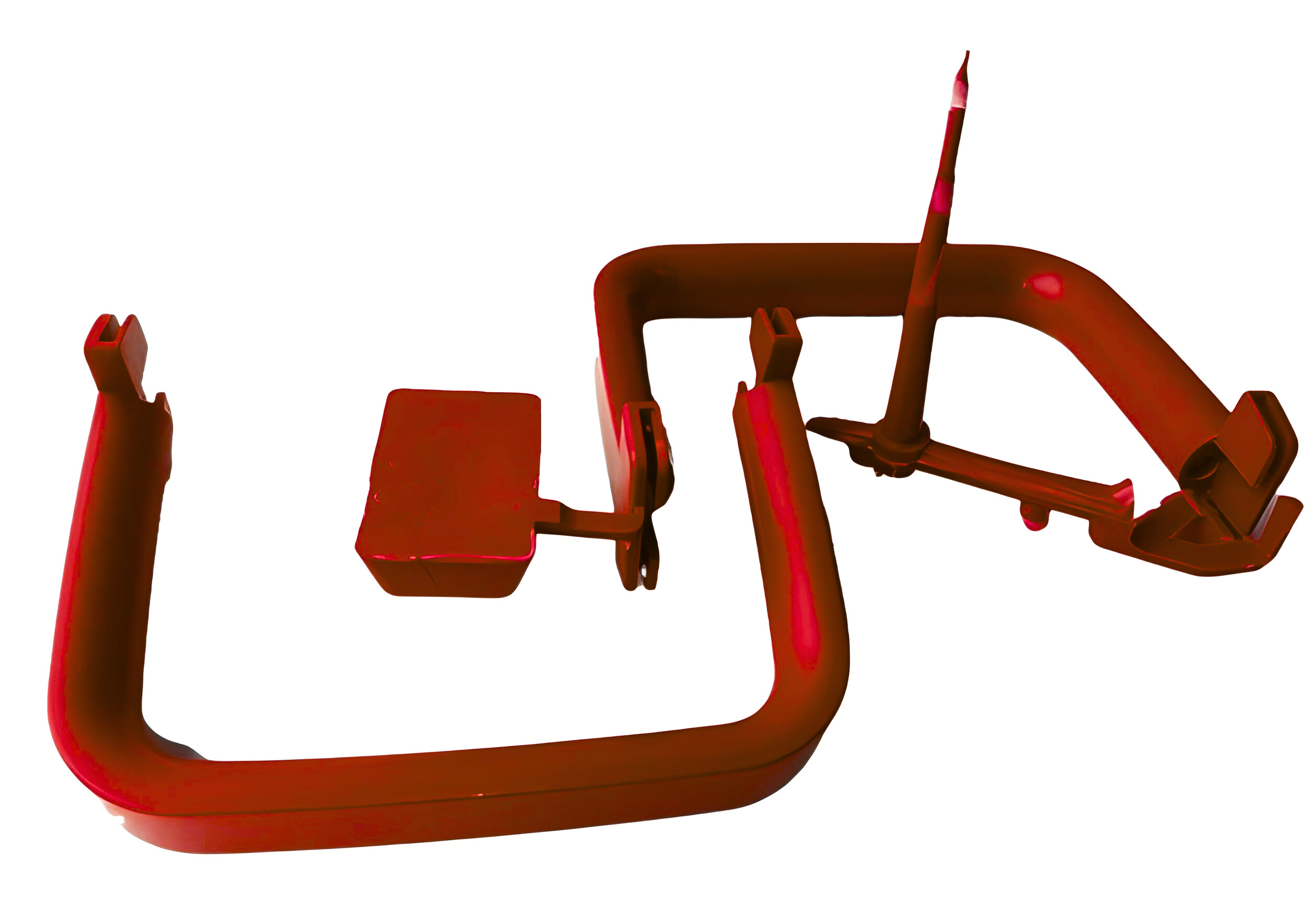
Johnny Xiong
Rapid Tooling Expert
Contents
In any professional CNC machining shop, tool selection isn't just a preliminary step; it's half the battle. As engineers, we know that the choice of cutting tool can—and will—dictate everything that follows: efficiency, tool life, surface finish, and ultimately, the accuracy of the final part.
Get it wrong, and you're looking at rapid tool wear, poor-quality finishes, or worse, scrapped parts. There is simply no "one-size-fits-all" tool for this job. This guide is a practical look at how professional machinists, like our team at HordRT, break down the types of CNC tools and select the optimal one for any given project.

Understanding CNC Tool Materials: From HSS to Carbide
Before you can even consider the shape of a tool, you must understand what it’s made of. The fundamental rule in machining is that your tool must be significantly harder than your workpiece and able to withstand the incredible heat and forces generated during the cut. This is where the trade-offs begin.
1. High-Speed Steel (HSS)
We still use plenty of HSS. Why? Because it’s tough. HSS is less brittle, meaning it can handle interrupted cuts or less-rigid setups (like in an older manual mill) without chipping. It's also cost-effective and can be easily resharpened, making it great for drills, taps, or small-batch jobs. The trade-off is its heat resistance; HSS loses its hardness at high temperatures, so you must run at slower cutting speeds.
2. Carbide (Cemented Carbide)
This is the industry standard for modern CNC production. We're talking about tungsten carbide particles held in a cobalt binder. Carbide is significantly harder and far more heat-resistant than HSS. This allows us to run cutting speeds several times higher, which is critical for cycle times and profitability. It’s our go-to for high-volume production and for cutting tough materials like stainless steel or titanium. But it has a weakness: it's brittle. You must have a rigid machine and setup. Any significant vibration or chatter can chip or shatter a carbide tool instantly.
3. Ceramics
When even carbide can't take the heat, we look at ceramics. These are for extreme-speed applications, like the finish turning of hardened steels or cast iron at incredible surface speeds. They offer phenomenal wear resistance at high temperatures. However, they are exceptionally brittle. You need perfect, stable machining conditions—no interrupted cuts. These are highly specialized tools, not for general-purpose work.
Common Types of CNC Milling Tools and Their Uses
For milling, a massive array of CNC tools exists, but the truth is that most jobs are accomplished using four core types.
- End Mills: These are the workhorses of the mill. They have cutting edges on the sides and the bottom, which means they can move sideways to cut profiles, pockets, and slots—not just plunge down like a drill. When we need to machine a pocket or cut a contour, we grab an end mill. The most common are flat end mills, used for 2D features like flat walls and floors.
- Face Mills: When you need to make a large, flat surface fast—like squaring up raw stock—you use a face mill. It’s a large-diameter cutter body that holds multiple replaceable carbide inserts. All those inserts work together to remove a lot of material quickly, leaving a smooth, flat finish. Most are indexable, meaning we can just rotate or replace a dull insert instead of the whole tool, which is a huge cost-saver in production.
- Ball Nose Mills: Look at the tip of this tool and you'll see it’s a perfect hemisphere. This shape is what allows us to machine complex 3D contours and smooth, sculpted surfaces. Think of molds, dies, or orthopedic implants. In 3-axis and 5-axis machining, we use these to trace 3D profiles. Achieving a smooth surface requires small, overlapping passes (step-overs), but for complex curves, nothing else works.
- Drills (Twist Drills): Their job is simple: make holes. The standard twist drill is designed to plunge into the material and evacuate chips up its spiral flutes. We use HSS drills for general work and solid carbide drills for high-volume production or drilling in tough materials. In CNC, drilling is often just the first step before reaming (to get a precise size) or tapping (to create threads).

An Overview of CNC Turning Tools (For Lathes)
On a lathe, the tooling strategy changes. The workpiece rotates, and a stationary tool—often a CNC turning tool attachment holding an insert—is fed into it.
- External Turning Tools: This is your basic lathe operation: cutting the outer diameter of a part. We use different insert shapes and holders for roughing (taking deep, heavy cuts to remove material fast) versus finishing (taking light passes for a smooth finish and tight tolerances).
- Boring Bars: A boring bar is essentially a turning tool for the inside of a part. You must drill a hole first, then the boring bar goes in to enlarge that hole to a very precise diameter and achieve a good internal finish. Rigidity is everything here to prevent chatter.
- Grooving and Parting Tools: These are specialized, blade-like tools. A grooving tool is fed in to cut a specific channel, like a groove for an O-ring. A parting tool is a similar tool that is fed all the way to the center of the part to cut the finished piece off the bar stock.
- Threading Tools: These tools cut screw threads. The insert has a sharp point shaped to the exact profile of the thread (e.g., 60° for a standard metric thread). The CNC lathe perfectly synchronizes the tool's longitudinal movement with the spindle's rotation to cut a precise helix.
The Importance of Tool Coatings
The base tool material is only part of the story. That ultra-thin coating on top is a critical performance multiplier. A good coating isn't cosmetic; it reduces friction, increases heat resistance, and dramatically improves wear resistance. It can be the difference between a tool lasting 100 parts or 1,000.
- TiN (Titanium Nitride): This is the classic, gold-colored coating. It’s a fantastic, cost-effective all-arounder for increasing wear resistance on drills and end mills. It can easily extend a tool's life by 3-4 times compared to an uncoated tool in general-purpose machining.
- TiAlN (Titanium Aluminum Nitride): This dark-colored coating is our go-to for high-temperature performance. As the tool heats up, the aluminum in the coating forms a protective aluminum oxide layer right at the cutting edge, acting as a thermal barrier. This is why it excels in high-speed machining or when cutting tough, heat-generating materials like stainless steel, titanium, or nickel alloys.
Coatings are a critical part of modern machining cutting tools, allowing us to push speeds and feeds far beyond what the base material alone could handle.

Tool Selection in Practice: The HordRT Method
So, how does an engineer at HordRT actually select from all these types of cutting tools for a new project? It's not guesswork. It’s a systematic process based on three primary factors: the part's geometry, the material, and the required precision.
- Analyze Part Geometry: First, we look at the print. What features are we cutting? Are there deep, narrow pockets? We'll need a long-reach end mill. Are there complex 3D-sculpted surfaces? That’s a job for a ball-nose mill. A wide, flat top? That’s a face mill for efficient surfacing. The tool's shape, diameter, and length must be able to physically access every feature.
- Consider Workpiece Material: Next, what are we cutting? If it's 6061 aluminum, we need sharp tools, probably with a high-polish or DLC coating to prevent material from sticking. If it's 304 stainless steel, we're choosing a tough carbide tool with a TiAlN coating to handle the heat and abrasiveness. Harder, tougher, or more abrasive workpiece materials demand harder, more heat-resistant tool materials and coatings.
- Define Precision Requirements: Finally, what are the tolerances and finish requirements? A general-purpose hole can be made with a standard drill. But a hole with a ±0.01mm tolerance? We drill it undersize first, then come back with a precision reamer or a boring bar to bring it to the exact final dimension. For a mirror-like surface finish, we'll always program a separate, light finishing pass with a sharp, dedicated tool to minimize tool deflection and ensure accuracy.
This systematic method ensures we create an efficient and reliable tooling plan that balances speed, cost, and quality before the first chip is cut.
Conclusion
As you can see, selecting the right CNC tools is a complex engineering decision. It’s a balance of material science, geometry, and physics, where a small choice can have a massive impact on the outcome.
Making the optimal choice is often the difference between a smoothly executed, profitable job and one fraught with delays, broken tools, and scrapped parts. This is why it pays to partner with a team that has this deep, practical experience.
At HordRT, our engineers and machinists live this every day. We don't just own the machines; we have the deep tooling knowledge required to make them perform. When you bring a project to us, you're not just getting a part; you're getting this entire systematic approach to tool selection, ensuring your part is machined efficiently and accurately, right from the start.
-q4gvl4k29y4hq8j9rjpapvj0ft06fje63olt7p210i.png)

